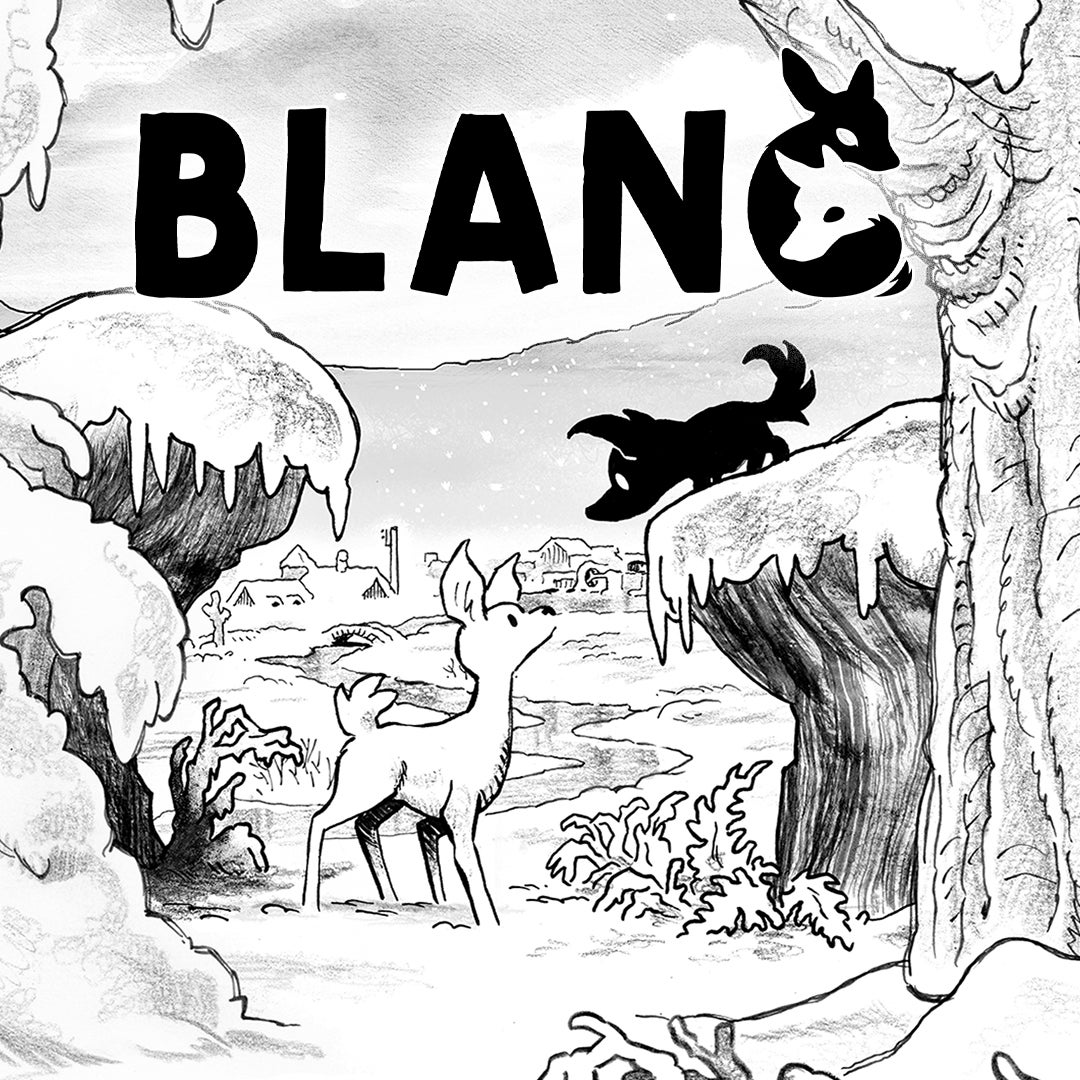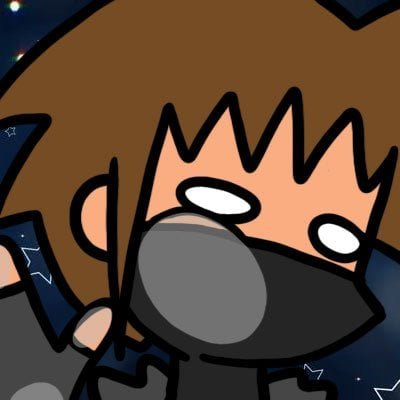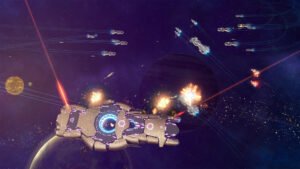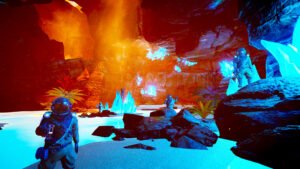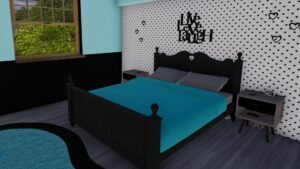When I reviewed 198X in the long-forgotten past of 2020, I remarked upon the idea of differentiating video games as art and art as video games. While I think there’s no denying that video games are an art form, there are games that are not only well-designed as interactive media and contain such incredible storytelling, themes, music, and visual aesthetic to be considered works of art; and then there are games that are more art installations as interactive media.
I bring this up because Blanc definitely falls in the latter category. Much like games I’ve talked about in the past, like Journey, Abzu, or Bound, it’s a game that does enough to be considered a game but is more about showcasing all the art it has crammed into an experience.
Honestly, there isn’t really a lot to say about Blanc, mostly due to the fact that, despite its attempts to be pure art as a videogame, it stumbles in almost every way, from its story to its gameplay to even its attempts at themes. It doesn’t outright fail, but it certainly doesn’t do enough.

Let’s begin, as I often do in my reviews, with the story. Blanc is a simple tale about a little faun and a wolf cub who lose track of their respective packs during an apocalypse-level snowstorm. While the two are initially cautious of each other, they quickly need to start working together in order to get back to their families. It’s a tale as old as time that never explores the ideas of enemies becoming friends or the fact that these two polar opposite animals have completely different roles on the animal food chain.
Not only that, the game is relatively short, only taking maybe two to three hours to complete in full. Now, this isn’t a criticism per se since I’ve long abandoned the Philistinic argument that a game’s value should be relative to its length; but the game’s short length directly affects the story—as players are given such little time to feel the relationship being formed between these two characters.
“However, if you’re going to play Blanc, heed my words: THIS IS A MULTIPLAYER GAME.”
Maybe there is something to be said about a story that just is and doesn’t need to ruminate too long, but for a story like this, there definitely needed to be either a bit more conflict or just a bit more time spent with the characters for them to really stick with you. Also, though this is more a personal grievance—the game attempted a fake-out death of small, innocent animals TWICE, and the fact that the game tried to emotionally gaslight me more than once was personally offensive.

In the gameplay department, Blanc is pretty straightforward. Players move between 10 small-ish puzzle levels combining the abilities of both the wolf cub and the faun—the wolf cub can chew through ropes and pull small objects, while the faun can jump higher, push larger objects, and act as a platform for the cub to make higher jumps. While solving each environmental puzzle is often fairly telegraphed, the game does through a few curveballs here and there, like a moment where you have to help ducklings navigate windy terrain and one where two baby goats mimic your every move.
It feels like it’s borrowing a lot from Journey, especially in one moment where you have a whimsical slide down snowy hills. It’s never too challenging, and I don’t think it really needs to be. However, if you’re going to play Blanc, heed my words: THIS IS A MULTIPLAYER GAME. It’s almost a necessity to have a second person get through this game with you, but unlike A Way Out or It Takes Two, that’s not naturally baked into the experience.
Blanc does have a single-player mode, but it is one of the most backward and horrible to control experiences I have had since trying to play Animal Crossing: New Horizon alone with two Joy-Cons. Playing alone, players must use both sticks to control each animal simultaneously. This may not seem like a big problem, but all of Blanc’s levels are big 3D spaces for these critters to move around in.
Maybe other players’ brains are more evolved than mine, but every time the character I was controlling with the left stick moved to the right of the screen, I immediately lost track of them as I tried controlling them with the right stick—call it a confusion of hand-eye coordination.

I don’t understand why the game didn’t just let you choose one character and have the other follow you, especially since the game has commands for each character to call the other when a point is unpassable alone. As a result, having to control two characters through a 3D space simultaneously ends up being more frustrating than interesting.
Also, for some baffling reason, even when playing in co-op, both players NEED either a Pro Controller or both Joy-Cons, which makes no sense since you only need one stick and two buttons to control either character, so trying to play in handheld is a non-starter for portable play. Although I guess theoretically you could just play single-player in handheld and have two people hold the Joy-Cons vertically? But the fact it’s designed this way is amateurish.
Not that you would want to play in handheld or on the Nintendo Switch in general, really, since performance on the console is pretty abysmal. It’s definitely a bit better while playing on the dock, but even then, I noticed a wildly inconsistent framerate whenever there’s a lot of stuff on screen, and in a game featuring multiple sections of billowing snow, you’re going to have a lot of stuff on screen.
The frame rate drops off a cliff completely in handheld, almost always slowing to well below the Switch’s native 30fps—this was particularly noticeable during the aforementioned whimsical slide through the snow, which could’ve been a fun, Journey-esk experience if it could’ve delivered at 60, or even a consistent 30fps.

Furthermore, the one thing the game has in spades, an incredible art style, is almost completely lost while playing in handheld, as the resolution muddies a lot of the game’s finer details. Blanc utilizes a brilliant pencil-shaded aesthetic that uses beautiful lines and shading to provide the details that beautifully compliment the game’s snow-covered world—much like drawings, it’s coming to life on a sheet of paper. Backing this minimalistic art style is a quiet, minimalist score that uses simple piano keys to punctuate each scene and add a bit of wonder to it—similar to the soundtrack in Breath of the Wild.
Listen, it’s not that I don’t think there shouldn’t be a space for art as videogames. Art is a fluid thing that can be anything it wants. But I can’t think of a reason you want to make art as a videogame and not really make it a videogame. Game design has certain rules and best practices that need to be followed to create an interactive experience that is—if not fun, then at least interesting. A game like The Last of Us is considered art because of its story, characters, soundtrack and themes, and it’s considered a videogame because its design makes it fun to play. Maybe it’s not fun to experience, but it’s undeniably fun.
But Blanc is too simple, too short and too poorly designed as a game to be on the same level—especially on the Nintendo Switch. I think it could’ve been an excellent short film, but it just falls flat as a game. It’s not an experience that’s completely devoid of value, but even for $15, you could probably do better. Hell, I think Journey is probably $15, just play that.

